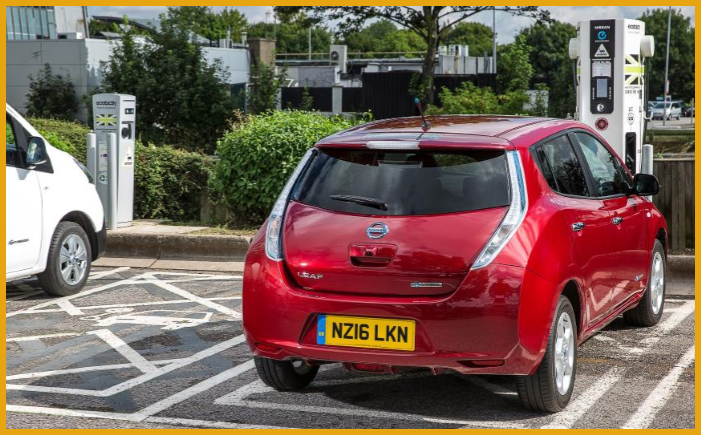 There will be more public charging stations for electric vehicles in the UK than there are gas stations by the summer of 2020, according to a new analysis. At the end of 2015, there were just 8,472 fuel stations in the UK, down from 37,539 in 1970. Assuming a steady rate of decline, EV maker Nissan predicts – not without self-interest – that by August 2020 this falls to under 7,870. (See www.energyinst.org)
There will be more public charging stations for electric vehicles in the UK than there are gas stations by the summer of 2020, according to a new analysis. At the end of 2015, there were just 8,472 fuel stations in the UK, down from 37,539 in 1970. Assuming a steady rate of decline, EV maker Nissan predicts – not without self-interest – that by August 2020 this falls to under 7,870. (See www.energyinst.org)
The number of public electric vehicle charging locations is expected to reach 7,900 by the same point in time. However, it’s claimed the accelerating adoption of electric vehicles means this crossover could happen sooner.
Just over 100 years since the first fuel station opened – November 1919 at Aldermaston in Berkshire – the number in the UK has peaked, declined and is expected to be overtaken by charging stations designed for battery, not combustion, powered cars. More than 75% of UK petrol stations have closed in the last 40 years, while the number of electric vehicle charging locations has increased from a few hundred in 2011 to more than 4,100 locations in 2016, as electric car sales take off.
According to Go Ultra Low, a joint government and car industry campaign, more than 115 electric cars were registered every day in the first quarter of 2016, equivalent to one every 13 minutes. The campaign also believes electric power could be the dominant form of propulsion for all new cars sold in the UK as early as 2027, with more than 1.3m electric cars registered each year.
The vast majority of electric vehicle owners now charge at home in the UK, but 98% of UK motorway services have charging stations, including rapid connectors that can charge a Leaf’s battery to 80% in 30 minutes. The 30kWh Nissan LEAF, launched in January, delivers up to 155 miles on a single charge – a range that covers more than 90% of the average daily commuting requirements in the UK.

